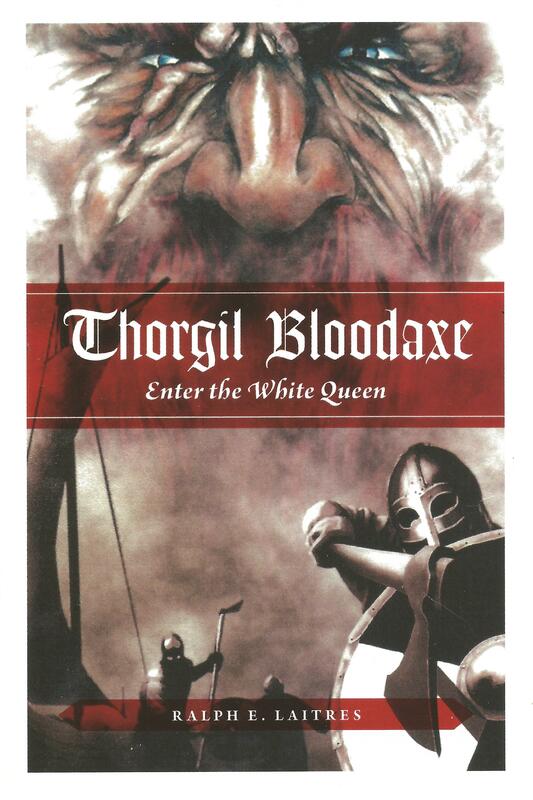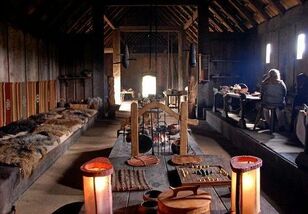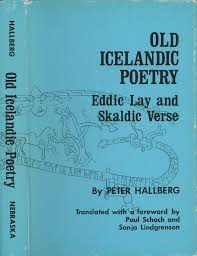"My weapon of choice would have to be the double-headed ox-horn axe, a fierce-looking weapon." What does a typical day of writing look like for you? Do you have any rituals or habits that help you become more productive? My rituals are nothing special. I make sure I have my coffee and cigars on hand, and sometimes, I like having whiskey in my coffee. My typical day starts out early (4:30 am/5:00 am), and I shut down my computer at 7:30pm to clear my head before going to bed at 9:00pm. Right now at this moment, I am doing rereads and rewrites of my storyline for Thorgil’s third book (The Vultures of Khurasan). Right now, the story stands at 159,000 words with 21 chapters, and 12 illustrated inserts by Pablo Marcos. If you could travel back in time to converse and drink a horn-full of mead with any viking in history who would it be and why? It would have to be Harald Fairhair, the first king of Norway (850-932). Harald is responsible for unifying Norway into one kingdom. He was as we say in the military; a warrior’s warrior, a true badass. "I make sure I have my coffee and cigars on hand, and sometimes, I like having whiskey in my coffee."
In reviews of your books Thorgil Bloodaxe has been compared to such iconic fantasy characters as Conan the Barbarian. However, in a wider social context, characters such as Conan have come under fire recently for portraying masculinity in a certain light. What do you hope to contribute to the wider conversation about masculinity and ‘being a man’ through Thorgil’s epic exploits? I write to write. I do not worry about all the social norms of today. It seems as if every day, one group or another finds a reason to be upset over something. My main character Thorgil Bloodaxe is all man, a military man who is not politically correct. If you are upset about something he may have done or said, he does not care. I served in the Marine Corps from 1980-1990. In the military, we are all brothers. We have a certain way of talking and joking around. Civilians who never served will never understand a military man. When I write about Thorgil, I rely on my time as a Marine. "When I write about Thorgil, I rely on my time as a Marine." There are many incredible pieces of art featuring your character Thorgil Bloodaxe on the Facebook fan page. Do you have any advice for writers who want to get art made for their novel? Over the years, I have commission many talented artists/illustrators to render Thorgil Bloodaxe in their artistic fashion. In 2012, I commissioned Bart W. Sears to give Thorgil his classic look. Bart owned his own company called Ominous Press, and has worked for Marvel Comics, and DC. Bart is well known for his articles in Wizard Magazine called Brutes and Babes. From 2012-2014, I commissioned a young talented artist named Savy Lim. Savy liked the character of Thorgil Bloodaxe. He asked for my permission to illustrate the larger-than-life warrior. I liked what he submitted to me and I commissioned him for my second Thorgil book (Shadow of Death). Savy Lim illustrated and colored the 2nd book’s front cover, and illustrated the book’s inserts. Savy’s rendition of Thorgil Bloodaxe is used as a reference for all illustrators that I commission. I tell them I am not looking for a new look for my main character. From 2014-2017, I was blessed to be able to commission a legendary illustrator who has over 50 years of artistic talent under his belt. Pablo Marcos took an interest in Thorgil Bloodaxe. Pablo way back in the 70s, worked for Marvel Comics on such titles as The Savage Sword of Conan (the black and white magazine), Red Sonja, and the Zombie. I always enjoyed his illustrations in the Conan magazines. I commissioned him to illustrate the 3rd book’s artwork (The Vultures of Khurasan). Oscar Gonzalez who worked with Pablo at the Edgar Rice Burroughs Inc., colored the ink illustration. For the 3rd book, I have 12 illustrations from Pablo. They will be placed at the end of several chapters in the book to fire up the imagination of the reader. Advice for any writers who would like to commission an artist:
Savy Lim illustrated and colored the 2nd book’s front cover, and illustrated the book’s inserts. Savy’s rendition of Thorgil Bloodaxe is used as a reference for all illustrators that I commission. I tell them I am not looking for a new look for my main character. "You will get what you pay for. Be professional when dealing with the artists. Show them the respect." You’ve published two books in the Thorgil Bloodaxe series which are available on Amazon, Enter the White Queen and The Shadow of Death. Is there a third book in the works or are you working on a different project? Yes, there is a 3rd book. It is titled Thorgil Bloodaxe: the Vultures of Khurasan. It will be released in late 2019, featuring the amazing artwork from Pablo Marcos. Right now, the story stands at 159,000 plus words with 21 chapters. Formatted into a 6x9 book, it will be around 400 pages. Allow me to share the back cover blurb: In a savage world ruled by the sword, with armies cutting red swaths across the lands, only one man heroically stands above them all. He is the mercenary leader Thorgil Bloodaxe. His name is well known and respected from the far eastern lands to the western lands. They say that Thorgil has fought in so many conflicts and battles over the span of his lifetime that he cannot name them all. Therefore, when the Caliph of Baghdad called upon him and his warriors to aid him with the conflict in his troubled land, the mercenary leader did not hesitate to accept. One more battle added to the long list did not matter to him. With his warriors, they join the Caliph's high-commander to trek to the hostile mountains of Khurasan, where they must confront a rebel leader and his fanatic followers known as the Vultures, putting an end to their terror spree against the Abbasid Caliphate. Find out more from Ralph E. Laitres on the Thorgil Bloodaxe fan Facebook Page.
0 Comments
In a viking’s mind the sword lay next to the spoken word. Wielding words with skill was as important as wielding a blade; a clumsy phrase could lead to more bloodshed than a misplaced sword stroke. If injury was intended then every viking knew that a well-crafted insult aimed at an enemy could fly farther and sink deeper than any hand-fletched arrow. Intelligence could be measured by one’s ability to interpret poetic riddles and, for those seeking glory, a deed enshrined in verse would outlast the richest treasure. Therefore, no study of the Viking Age could be complete without considering their poetry. "a clumsy phrase could lead to more bloodshed than a misplaced sword stroke"
The end-rhyme pairs love/of and day/say in an ABAB scheme satisfy, to the modern ear, what poetry should ‘sound’ like. Each line has either six or seven syllables which demonstrates a fair amount of consistency between lines. "Modern song lyrics and traditional Western poems are primarily defined by By contrast, the skaldic poetry enjoyed by vikings centered around internal rhyme and alliteration instead. Both of these were made easier by the fact that Old Norse as a language has less phonetic diversity than modern English. Since there are literally fewer sounds within the language it is much easier to find rhymes and alliteration in Old Norse. Skaldic poetry also featured over one hundred distinctive structured verse forms, each of which had its own strict set of rules. One of the most popular forms was dróttkvætt, also known as ‘court metre’. "the skaldic poetry enjoyed by vikings centered around internal rhyme and alliteration" While it is nearly impossible to re-create within the English language I will give an approximation of my own making based on a set of five dróttkvætt-like rules.
With those five rules in mind, here is an example of how they can be applied and what (with a great stretch of the imagination) viking verse might have sounded like. Attempt to construct a verse of your own with these five rules and you’ll find it a synapse-stretching task. However, a skald would not consider the verse above to be dróttkvætt at all as it does not strictly follow the additional rules of the form. In conversations with doctoral students of Norse literature I have heard these skaldic forms described as ‘hyper-complex’ with ‘draconian rules’; however, Viking Age skalds were famed for being able to improvise such forms on the spot. “skaldic forms [were] ‘hyper-complex’ with ‘draconian rules’; however, In addition to these challenging structural complexities skalds were famously known for their use of a unique poetic device known as a kenning. Kennings were metaphorical phrases that alluded to Norse myth and culture. For example, the ‘whale road’ is a kenning for ‘the ocean’; the ‘sea of swords’ is a kenning for ‘battle’; ‘Freya’s tears’ is a kenning for ‘gold’. The best skalds might employ a double kenning, a reference to a reference. A phrase like ‘the venom of the battle snake’ employs the kenning ‘battle snake’ for ‘sword’, presumably making its ‘venom’ a kenning for ‘blood’. Therefore, by saying ‘the venom of the battle snake’ the skald simply means ‘blood’. While triple or even quadruple kennings may have existed, scholars such as Peter Hallberg declare that the intimate knowledge of Norse culture and skaldic traditions needed to decipher these kennings makes them practically inaccessible to the modern reader. “Therefore, by saying ‘the venom of the battle snake’ the skald simply means ‘blood’”
For more on poetry in the Viking Age Joshua recommends Old Icelandic Poetry: Eddic Lay and Skaldic Verse by Peter Hallberg.
|
AuthorJoshua Gillingham is an author, editor, and game designer from Vancouver Island, Canada. Archives
April 2022
Categories
All
|







 RSS Feed
RSS Feed
